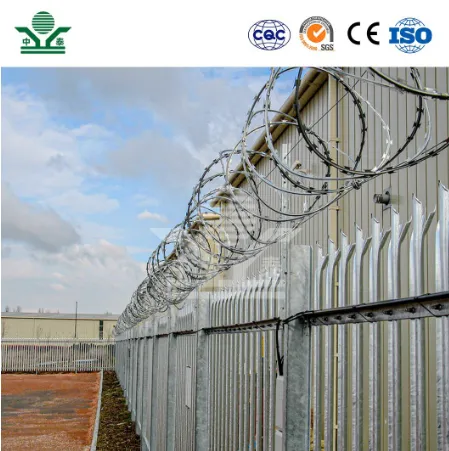Mobile Noise Barriers A Modern Solution to Urban Sound Pollution
In today's fast-paced urban environment, noise pollution has become an increasingly prevalent issue. With the rise of traffic, construction activities, and bustling city life, many urban dwellers find solace disrupted by constant noise. To combat this, innovative solutions have emerged, one of which is the concept of mobile noise barriers. These adaptable structures not only offer flexibility and effectiveness but are also paving the way for new standards in urban sound management.
Understanding Noise Pollution
Noise pollution is defined as unwanted or harmful levels of noise that can lead to adverse effects on human health and well-being. Studies have shown that prolonged exposure to high levels of noise can result in a range of health problems, including stress, sleep disturbances, and even cardiovascular issues. In urban areas, where vehicles, construction, and other activities generate relentless sound, the need for effective noise mitigation has never been more critical.
The Rise of Mobile Noise Barriers
Mobile noise barriers are portable structures designed to minimize noise pollution from various sources. Unlike traditional fixed barriers, these mobile options can be deployed wherever sound levels exceed acceptable thresholds. This flexibility makes them particularly valuable in dynamic urban settings where noise sources often change or vary in intensity.
Typically constructed from sound-absorbing materials such as acoustic panels, these barriers can be easily transported and set up in a matter of hours. They are especially beneficial for temporary events, construction sites, or during emergency roadworks where sound levels can spike unexpectedly.
Applications in Urban Settings
1. Construction Sites One of the most common applications of mobile noise barriers is in construction. Construction activities are notorious for generating excessive noise, which can disturb nearby residents. By deploying mobile barriers around the site, contractors can significantly reduce noise pollution, leading to a more efficient and community-friendly operation.
2. Events and Festivals Public events, concerts, and festivals often generate significant noise levels, which can interfere with local residents. Mobile noise barriers can be set up around the perimeter, ensuring that sound is contained within the event space, thereby fostering a more harmonious relationship between event organizers and the community.
3. Traffic Regulation Road improvements and traffic management can often create temporary spikes in noise levels. Mobile noise barriers can be utilized during such projects, protecting nearby homes and businesses from the disruptive sounds of heavy machinery and increased vehicle traffic.
mobile noise barrier

Benefits of Mobile Noise Barriers
The advantages of mobile noise barriers extend beyond just their flexibility. They offer several key benefits that make them an essential tool for noise mitigation in urban environments
- Cost-Effectiveness By providing a temporary solution to noise issues, mobile barriers eliminate the need for more expensive permanent structures. This makes them a budget-friendly option for both contractors and local authorities.
- Environmental Impact Many mobile noise barriers are made with eco-friendly materials, contributing to sustainable building practices. Additionally, by reducing noise pollution, they indirectly promote better mental health and well-being for residents, enhancing the overall quality of urban life.
- Community Relations Effective noise control measures help foster better relationships between construction companies/event organizers and the surrounding community. By proactively addressing noise concerns, stakeholders can build trust and cooperation, leading to smoother project execution.
Challenges and Future Developments
While mobile noise barriers present a promising solution to urban noise pollution, challenges remain. The efficiency of these barriers can be influenced by factors such as wind direction and the intensity of noise sources. Ongoing research and development are crucial for improving the design and materials used in these barriers, ensuring maximum efficacy.
Moreover, as cities continue to grow and evolve, the demand for innovative noise-reduction strategies will only increase. The integration of technology, such as noise monitoring sensors and automated deployment systems, could further enhance the effectiveness of mobile noise barriers, making them an even more viable option for urban planners and developers.
Conclusion
Mobile noise barriers represent a forward-thinking approach to managing urban sound pollution, balancing the needs of development with those of local communities. As cities become increasingly dynamic and complex, the role of these barriers will undoubtedly grow, making our urban landscapes quieter and more livable. By continuing to invest in such innovations, we can work towards a future where the hum of city life doesn't drown out the peace we all seek.
-
Why Galvanized Trench Cover Steel Grating Resists Corrosion
NewsJul.10,2025
-
The Versatility and Strength of Stainless Expanded Metal Mesh
NewsJul.10,2025
-
Load Calculations in Steel Grating Platforms
NewsJul.10,2025
-
Keeping Pets and Kids Safe with Chicken Wire Deck Railing
NewsJul.10,2025
-
Hole Diameter and Pitch for Round Perforated Metal Sheets
NewsJul.10,2025
-
Aluminium Diamond Mesh in Modern Architecture
NewsJul.10,2025
Subscribe now!
Stay up to date with the latest on Fry Steeland industry news.

